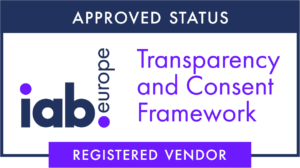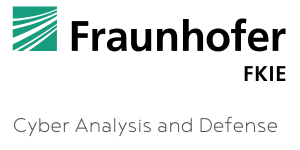Frequently Asked Questions (FAQ)
Is fraud0 for me?
Signs of invalid and bot traffic include:
- High bounce rates (for example in your CMP statistics or analytics tool)
- Low-quality leads
- Anything too high or too low (100% bounce rate, 0 seconds on site)
- Anything too random or too consistent (even traffic distribution every day, same outliers).
- Anything that doesn’t make common sense (a high volume of visitors at night)
- High traffic from a specific referral site coupled with an unusually high bounce rate
- Most traffic following a specific navigation pattern (all exiting on the same web page)
For more information on how to detect bots using your own analytics data, see our article: How to detect IVT using your own analytics data
The answer is probably yes. We have seen everything from 1% – 100% fraudulent traffic. What we’ve never seen, however, is 0%.
On average, 16% of ad spend is wasted on fraudulent activity (e.g. fake ad clicks by bots, different forms of ad fraud like Retargeting Fraud, Domain Spoofing, Device Spoofing etc.).
Even if you’ve been a victim of ad fraud before, it’s never too late to do something about it.
Yes, Google and Facebook do detect fraudulent traffic, but many advertisers feel that they just don’t do enough.
No. fraud0 was built to have no impact on your website.
No, your website visitors won’t notice the use of fraud0.
Yes. You have the express right to protect yourself from fraudulent activities. Our detection algorithms were built with a strict privacy first approach. There is no PII (personally identifiable information) needed to label fake traffic, but only standard JavaScript parameters.
You can start immediately by creating a free account and be up and running within a few minutes.
How does fraud0 work?
fraud0 monitors your traffic 24/7 and provides you insights in the dashboard. Furthermore, IPs that have been recognized as bot or invalid traffic can be excluded from your campaigns.
There are two ways this works:
Via the Google Ads API IP addresses will be automatically excluded once set up. Furthermore, using your tag manager, Negative Audience groups are automatically created. These allow you to automatically exclude fake traffic on all channels such as Google Ads, Facebook, DV360, Microsoft Ads and many more.
Thanks to our analytics suite, you can see exactly where fraudulent and low-quality traffic is coming from and react accordingly. For example, you can shift your advertising budget to campaigns that show more human traffic.
No. We only exclude fraudulent non-human users who have no intention to buy. And we only do so when we’re 100% certain.
No. That’s the main advantage of using the Google Ads API for excluding fraudulent IP addresses and the Negative Audience lists that we generate for you in real time. Once you set up the system (about 10 minutes), the lists are automatically updated and additionally added to all your major marketing platforms such as Facebook, Google Ads, Instagram, LinkedIn, TikTok, etc.
This eliminates unwanted traffic in real time and fully automatically on all your channels.
We analyze data discrepancies and behavioral anomalies. In addition, we apply a combination of real-time scoring, behavioral analysis, honey pots, browser testing, and other undisclosed techniques.
Invalid traffic can be:
| Data Center | Data centers are a popular location for malicious bot networks. As data centers are secured locations that humans generally do not have access to, traffic originating from a data center is most likely a bot. For example, a session originating from an Amazon AWS data center IP address block is unlikely to be a valid human user. |
| Proxy | By routing their traffic via residential proxies, bot developers obfuscate their location and identity. Allegedly, this is relevant traffic from important markets such as the USA, Germany, or the UK. However, it actually originates from countries such as India, Pakistan, or Bangladesh. We keep a blacklist of known proxy connection details and IP addresses and flag traffic from these sources. |
| Tor | Tor, short for The Onion Router, is a protocol designed to anonymize internet traffic. Fraudsters can use Tor to disguise their location and usage information. |
| Scrapers | Malicious bots that scan websites for specific information such as email addresses, phone numbers, inventory details, or pricing data. This is often the case on e-commerce websites, where scraper bots are mostly used by competitors to undercut prices and increase their sales. |
| Behavioral Anomalies | Since bots are programs that perform repeatable actions, the exact repetition of activities can be an indication of non-human traffic. For example, to detect non-human traffic, we measure the intervals between clicks on a website. A human user has variable click intervals and patterns and does not behave with inhuman precision. Another example is measuring the number of clicks within a given session. A deviation from normal human activity may indicate that the user is a bot. When actions are performed by a script, the number of clicks can be very high or very low. Both can indicate suspicious activity. |
| Automation Tools | Fraudsters use tools like Puppeteer or Selenium, which were originally programmed to help developers test their work. However, these tools can also be used to easily create bots that visit websites and click on ads. |
| False Representation | False representation, also known as “user agent spoofing,” occurs when the browser’s user agent string is altered to disguise the user’s identity. When user agent tampering is present, there is a very high probability that the traffic is caused by a fraudulent user. The same is true for the rotation of the user agent identifier. Bots use rotating details (e.g., different browser type or operating system) for new sessions to impersonate a legitimate user. However, it is highly unlikely that the IP address of a real user would have constantly changing user agent details, since real people usually use the same devices and browsers. |
| Cookie Rotation | To avoid detection, bots also rotate cookies and referrer information. It would be suspicious if the same IP address (or other identifiers) is recorded with different cookies, since the normal ratio between a real user and his cookies is one-to-one. |
| Plugin Analysis | We analyze irregularities between installed plugins and browser functions to identify bot traffic. |
| Blacklisted Referrer | We maintain a block list of referrers that are known sources of poor traffic. These include bot farms, click farms, or fake websites based solely on bot traffic. |
| Malicious Publisher | Malicious publishers set up fake websites, fill them with plagiarized content, sign them up to ad networks, and then direct bot traffic to them. We maintain a block list of “malicious” publishers and flag traffic from these sources. |
| Click Farms | Click farms employ numerous low-paid workers to:
Typically, these organizations are located in developing countries such as China, India, Indonesia and Bangladesh. |
| Known Bots | We maintain a blocklist of known bot and crawler names. |
When we detect unwanted clicks on one platform, we automatically exclude them on all other platforms as well. For example, if we detect invalid users on Google Ads, we also exclude them in your Facebook, Twitter, and LinkedIn campaigns.
The use of VPNs is a factor we take into account when analyzing for fraudulent activity. However, we do not block traffic solely for the reason that it came via a VPN connection.
Proxy connections are much more likely to be malicious than VPN connections. We keep a blacklist of known proxy connection details and IP addresses and flag traffic from these sources.
Our analysis shows that over 99.3% of ad clicks from proxy networks are automated bots. That’s why we exclude traffic via proxy connections by default.
Choosing a plan
Yes – without any commitment. You also don’t have to provide credit card details for the trial period.
No. You can use the tool with all its features for free.
During and after the free trial period, you can choose one of our monthly or annual subscription packages at any time.
The main difference is the number of sessions available per month.
If you do not exceed the limit of your package regularly, nothing will happen. However, if you regularly exceed the limit of your package, we will upgrade you to a higher package – but not without informing you first.
At no time will the fraud0 script stop working and affect your website in any way!
There are no strings attached and no additional fees.
We support an unlimited number of landing pages for each domain on all of our packages.
We offer several payment options, including credit / debit card and PayPal. Your payment options depend on which country you live in.
Getting started
First, you need to implement our provided script into your website. The code allows us to detect invalid traffic which will be shown in the dashboard.
We recommend that you integrate the script directly into your website. This way, we can also detect bots that have already left your website (“bounce”) before the tag manager is loaded.
No. You’ll see the traffic data in your dashboard, but you’ll need to connect your Google Ads account for automatic IP address exclusion and set up “Negative Audience Lists” to exclude known invalid traffic from your advertising platforms like GoogleAds, Facebook, and LinkedIn.
Customer Support
Our friendly support team is ready to help out. Please email support@fraud0.com
When you have created a free account already, please add your Workspace ID to the email, which can be found in the top-left corner.
Still have questions?
Take a look at our Help Center, where we have collected more FAQs.
Protect Your Data and Analytics From Bots and Invalid Traffic
Take back control over your data and try fraud0.
- 7 days free trial
- No credit card required
Our Customers Love Us














